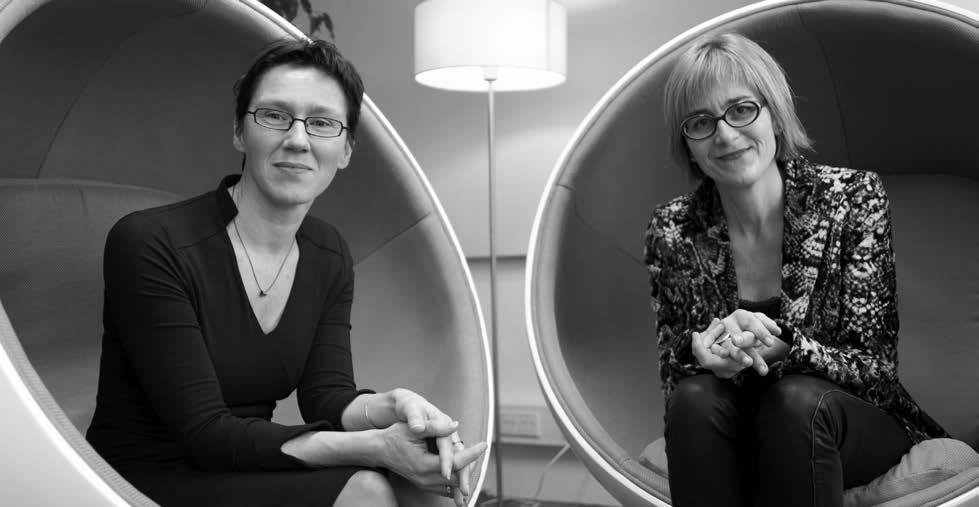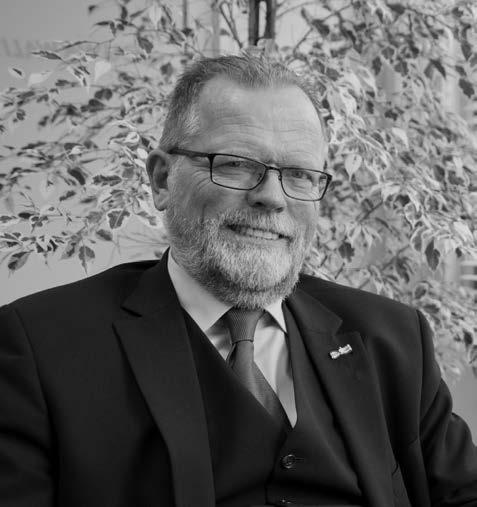
6 minute read
International confidence
The confidence in accreditation is legally extended to all countries of the European Union and the Member States of the European Free Trade Association via European Regulation 765/2008. This confidence applies to the public as well as the private domain.
Every Member State is obliged to appoint a national accreditation body or to outsource this activity to accreditation bodies of other Member States. The RvA has been appointed by the authorities to fulfil this role in the Netherlands.
Peer evaluations
By mutual recognition all test reports and certificates of conformity issued under European accreditation have the same status. Therefore, any accreditation issued in our country will also be accepted in other European countries. This promotes free trade. It prevents for instance suppliers of products and services having to apply for a certificate in every country. This mutual recognition is based on a peer evaluation by the private association: European co-operation for Accreditation (EA) which has been joined by all European accreditation bodies.
During a peer evaluation a team composed of colleagues from other European accreditation bodies reviews whether the organisation to be assessed meets the set criteria. The international ISO/IEC 17011 standard and the European Regulation apply to these as a guideline. These peer evaluations serve as a guarantee of the expertise, impartiality and independence of national accreditation bodies. At the end of 2013/beginning of 2014 the RvA itself again underwent a peer evaluation. You find the full report on our website. In addition, in 2014 we contributed to assessments in Macedonia, Kosovo, Slovakia, Norway and Greece.
International normalisation
The assessments of the RvA take place on the basis of accreditation standards. In order to harmonise these assessments internationally, a standards framework is required which has international force. In the meantime globally recognised ISO standards have been created for all our accreditation activities. The most recent one appeared in 2012: the accreditation standard for certification bodies of products, services or processes. These standards are updated once every five or ten years on average and can be considered as private laws for self-regulation.
We consider the legitimacy of these standards to be a point of concern. The intention is obviously that on balance all interested parties have a say in the criteria, or in other words: the height of the bar. But in the time-consuming process of normalisation it appears that it is increasingly the bigger parties that call the shots. This applies in any event to accreditation standards, where representatives of certification bodies have more resources to move the standards in a direction they prefer than most of the other stakeholders, while the users, such as the business sector and also increasingly the public sector, appear to be less willing to spend more on this. Certainly if there is increasingly more reliance on self-regulation it is important to keep a sharp eye on the height of the bar. After all, that height determines how justifying trust is given substance. Accreditation and conformity assessments have no geographic boundaries. That is why harmonisation is of major importance to an open economy such as the Dutch one, but then at a level that is in line with the expectations of the interested parties in our work.
European harmonisation
In the European accreditation regulation the EA has been appointed as the body which should not only organise the peer evaluations but also encourage the harmonisation between the members. The RvA is active in various EA Committees and in the EA Board.
There are many European guidelines in the areas of health, safety and the environment. It is left up to the Member States to decide what are the best accreditation standards for assessing inspection bodies and subsequently to notify them in Brussels. Because member States make different choices, the EA has the difficult task of agreeing on the most suitable accreditation standard and then obtaining approval of that position from the Member States who previously adhered to a different accreditation standard. This is illustrative of the split between legal rules and private standards. But Europe, nevertheless, is of the opinion that every body notified, the so-called ‘notified body’, should have the same market access in all Member States. The RvA does its best to include this competition factor in its advice to departments when it is asked about what are the most suitable standards for notification.
In 2014 this has been specifically important upon the implementation of the European Directives adjusted to the New Legal Framework (Regulation EU 765/2008 and EU decision EU 768/2008), also known as the Alignment Package. In the meantime a project has started at the EA as the united accreditation bodies to advise the European Commission and the Member States about the accreditation standard in our eyes most suitable for each directive. In the long run this should lead to more uniformity and thereby to a comparable playing field.
In the private sector we have noticed now and then the reverse effect. Because the globally agreed standards, which are by definition a compromise, sometimes don’t go far enough according to users and customers, extra requirements are added to standards via certification schemes. In the Netherlands we have already had for quite some time the model of the accepted scheme manager (see also Annex 6). This means that the certification schemes are assessed by the RvA to be worthy of accreditation and that the accredited parties deploying these schemes all do it equivalently. In this way the national regulations and the nationally required level of trust can be better responded to. A good example of this is the Stichting Coördinatie Certificatie Milieu- en Arbomanagementsystemen. Sometimes Europe follows the scheme as an example. For instance the VCA schemes of the Stichting Samenwerken Voor Veiligheid have been copied in Germany and Belgium and the food safety schemes of a Dutch scheme manager (SCV) have already been applied in several European countries.
Global harmonisation
At international level there are two umbrella organisations promoting the harmonisation between countries and regions.
• International Laboratory Accreditation Cooperation (ILAC) for laboratories and inspection bodies;
• International Accreditation Forum (IAF) for certification bodies.
A national accreditation body can be a member of both umbrella organisations. The RvA is a co-signatory of the multilateral ILAC-MRA and IAF-MLA agreements.1
ILAC and IAF cooperate intensively in several areas. This applies to the organisation and the completion of the peer evaluations, to communication and to the assistance to countries just starting accreditation.
At ILAC and IAF a strategic discussion is going on about the relationship between both organisations: How much can we do together and how can we make the organisations more effective since accreditation has become a globally established concept? At least as important is the relationship between the global organisations, the regions and the separate countries. At the moment it often happens that the same work is first carried out regionally and then globally. Since accreditation is increasingly gaining a legal basis –such as in Europe, but also for instance in China – the global recognition rules should offer sufficient scope for regional or sometimes even national tailored work. This new reality has not yet been embraced by all countries, partly because not all countries are in such a logically economic region as is for instance the Netherlands in the European Union. At ILAC and IAF three acknowledged regions can be distinguished currently: EA, IAAC (Inter American Accreditation
1 For reasons of readability we will talk in this public report of MLA where MLA or MRA is meant.
Cooperation) and PAC/APLAC (Pacific Accreditation Cooperation/Asia Pacific Laboratory Accreditation Cooperation). In addition, the AFRAC (African Accreditation Cooperation) and ARAC (Arab Accreditation Cooperation) regions are in development. Countries can now still be a member of multiple regional cooperation structures or even be a direct member of ILAC and IAF without being a participant in a region.
The RvA is an advocate of a strong region sending regional representatives to make harmonisation and recognition agreements in a global context with representatives of other regions.
The status of the participation in mutual recognition as of January 2015 is:
• EA: 35 signatories in 35 countries (including several non-European countries who have a bilateral agreement with the EA);
• ILAC: 87 signatories in 72 economies;
• IAF: 70 signatories in 63 economies.
Of organisations accredited by the RvA, 33 laboratories and 32 certification bodies have taken out a license to be able to carry the ILAC-MRA mark or the IAF-MLA mark respectively on their reports or statements covered by the multilateral agreement.
Foreign policy
In accordance with the European Regulation, as from 2014 onwards the RvA is definitively no longer allowed to grant or maintain accreditations in European countries other than the Netherlands, except with the consent of the respective country. This is meant to make competition between national accreditation bodies impossible. The logical consequence of this is that Dutch branches of organisations accredited abroad are assessed by the RvA at the request of the foreign accreditation body, and the other way around. This is beneficial for both national and European harmonisation.
On the basis of these starting points the RvA also tightened its policy with regard to granting accreditation in countries outside Europe. We remain active with accreditations in countries in which no ILACMRA or IAF-MLA partner is yet established, but for the rest we restrict ourselves to those conformity assessment bodies which allow us to assess jointly with other local accreditation bodies. In countries with an ILAC-MRA or IAF-MLA partner, from the middle of 2017 onwards, we will offer only accreditation alongside the accreditation of the local accreditation body, whereby we will cooperate as much as possible with that body. The latter is to keep a finger on the pulse of the daily practice of accreditation in an international context, to encourage harmonisation and to learn from the methods and working methods of other accreditation bodies.





